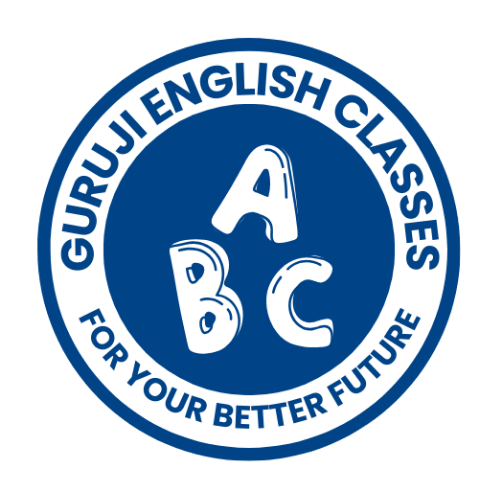The ‘E’ sound is one of the most commonly used sounds in English. Whether in simple words like “red” or more complex ones like “believe,” mastering this sound is essential for clear pronunciation and better communication.
In this guide, we will explore:
✔️ Different types of ‘E’ sounds
✔️ Rules and patterns for pronunciation
✔️ Common words with the ‘E’ sound
✔️ Exercises and quizzes to test your learning
✔️ Notable points and tips to improve pronunciation
By the end, you will speak more fluently and understand English better. Let’s get started! 🚀
1. Types of ‘E’ Sounds in English
The letter ‘E’ can have different sounds depending on the word. The three most common sounds are:
1.1 Short ‘E’ Sound (/e/)
The short ‘E’ sound is heard in words like “pen” and “bed”. Your tongue stays relaxed, and the sound is quick.
✅ Examples of short ‘E’ words:
- red
- pen
- bed
- get
- ten
- net
1.2 Long ‘E’ Sound (/iː/)
The long ‘E’ sound is pronounced like “ee” in words such as “tree” and “see”. It has a clear and stretched sound.
✅ Examples of long ‘E’ words:
- see
- tree
- bee
- feet
- green
- believe
1.3 Schwa ‘E’ Sound (/ə/)
The schwa sound is the most common sound in English. It is unstressed and sounds like a soft “uh” (e.g., “the,”“sofa”).
✅ Examples of schwa ‘E’ words:
- the
- taken
- open
- problem
- silent
2. Rules and Patterns for the ‘E’ Sound
Understanding how ‘E’ is pronounced will help you improve both reading and speaking. Here are some key rules:
2.1 When ‘E’ is Short (/e/)
📌 If a word has only one vowel followed by a consonant, ‘E’ is usually short.
🔹 Examples: pen, let, ten, red, set
2.2 When ‘E’ is Long (/iː/)
📌 If an ‘E’ is followed by another ‘E’, it is usually long.
🔹 Examples: see, tree, free
📌 If ‘E’ appears in an open syllable (ending in a vowel), it is often long.
🔹 Examples: he, she, me
2.3 When ‘E’ Becomes a Schwa (/ə/)
📌 If ‘E’ is in an unstressed syllable, it often changes to a schwa sound.
🔹 Examples: taken (tā·kən), open (ō·pən)
📌 If a word ends in “-er,” the ‘E’ is often a schwa.
🔹 Examples: water, father, mother
3. Common Words with the ‘E’ Sound
Here’s a helpful list of words with different ‘E’ sounds:
3.1 Short ‘E’ (/e/) Words
📌 bed, ten, get, net, pet, pen, red
3.2 Long ‘E’ (/iː/) Words
📌 see, tree, bee, free, key, cheese
3.3 Schwa ‘E’ (/ə/) Words
📌 taken, open, silent, problem, mother
4. Exercises to Improve Your Pronunciation
4.1 Identify the ‘E’ Sound
Choose the correct ‘E’ sound (Short, Long, or Schwa) for each word:
1️⃣ Green – (Short / Long / Schwa)
2️⃣ Mother – (Short / Long / Schwa)
3️⃣ Red – (Short / Long / Schwa)
4️⃣ Tree – (Short / Long / Schwa)
5️⃣ Taken – (Short / Long / Schwa)
4.2 Fill in the Blanks
Complete the words with the correct ‘E’ sound:
1️⃣ B_ _
2️⃣ Tr_ _
3️⃣ B_ d
4️⃣ F_ _ t
5️⃣ Op_ n
5. Answers to Exercises
5.1 Answers: Identify the ‘E’ Sound
✅ Green – Long E
✅ Mother – Schwa
✅ Red – Short E
✅ Tree – Long E
✅ Taken – Schwa
5.2 Answers: Fill in the Blanks
✅ Bee
✅ Tree
✅ Bed
✅ Feet
✅ Open
6. Notable Points & Tips to Remember
🎯 The letter ‘E’ is the most common vowel in English.
🎯 The silent ‘E’ at the end of words usually makes the vowel long (e.g., “make,” “theme”).
🎯 Not all ‘E’ words follow strict rules, so practice pronunciation!
🎯 Listening to native speakers helps with recognizing ‘E’ sounds naturally.
7. Fun Ways to Practice the ‘E’ Sound
💡 Listen to Songs – Songs like “Let It Be” (The Beatles) are great for hearing the ‘E’ sound.
📖 Read Aloud – Pick a paragraph and focus on pronouncing ‘E’ sounds correctly.
🎤 Watch English Videos – Repeat words from Guruji English Classes to improve pronunciation.
📝 Write Down New Words – Keep a list of words with different ‘E’ sounds and practice them daily.
8. Final Thoughts
Mastering the ‘E’ sound is a small but powerful step toward fluent English speaking. With regular practice, listening, and speaking, you’ll improve quickly.
✅ Focus on the rules and patterns of ‘E’.
✅ Practice with exercises and real-life examples.
✅ Listen to native pronunciation to fine-tune your skills.
Want to learn more? Subscribe to Guruji English Classes on YouTube for easy and fun English lessons! 🎥
🚀 Now it’s your turn! Comment below 👇 and share how many answers you got right in the exercises! Let’s improve together! 😊
